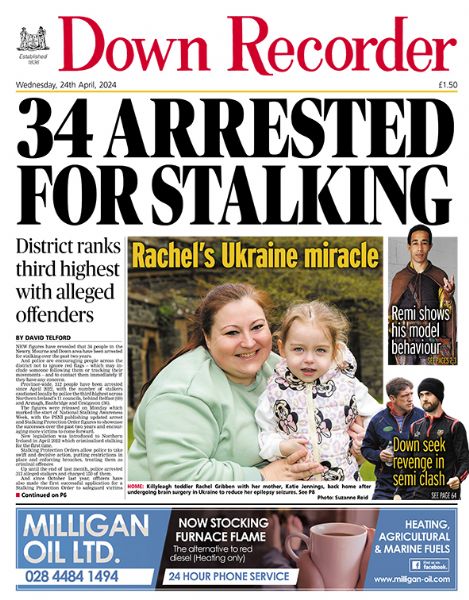New figures show huge levels of child poverty in Newcastle estates
New figures show huge levels of child poverty in Newcastle estates
9 November 2016
ALMOST one in four local children are living in poverty.
Figures published yesterday by the End Child Poverty Coalition show that 22.74 per cent of children in South Down are living below the poverty line.
The poorest area is the Murlough ward of Newcastle where almost half of all children are considered to be living in poverty, followed by the Ballymote ward of Downpatrick with a child poverty level of 37.08 per cent and Ballymaglave in Ballynahinch where 30.11 per cent of children are below the poverty line.
Areas where at least a quarter of children are at risk of poverty include Killyleagh (28.17 per cent), Crossgar (25.84 per cent), Quoile (25.67 per cent), Cathedral (25.59 per cent) and Castlewellan (24.63 per cent).
By contrast, areas where children are considered least at risk of poverty include Dunmore (7.65 per cent), Kilmore (10.51 per cent), Saintfield (12.28 per cent) and Derryboy (13.01 per cent) and Killough (13.52 per cent).
The local data begins by classifying children in poverty if they live in families in receipt of out of work benefits or in receipt of in-work tax credits where their reported family income is less than 60 per cent the median income.
South Down MP Margaret Ritchie said the latest figures showed how important is was for the Northern Ireland Executive to work with local government to ensure the issue is properly tackled.
While Murlough and Ballymote had historically shown higher than average levels of childhood poverty, Miss Ritchie said Ballymaglave now being classed as one of the worst affected areas was a cause for concern.
“Resources must be put in place to ensure this is tackled once and for all,” she said.
“These areas are so particularly dependant on European funding that this must be addressed with urgency because of the issue of Brexit.
“We need to look at the availability of proper resources in these areas whether these resources are provided through schools, community or voluntary organisations.”

